Manly Exercises. The Broadsword and Single-Stick. Part II.
Continued from PART I.
THE BROADSWORD AND SINGLE-STICK.
II.
BEFORE placing the “single-stick” in your hand, it is our intention to put you through a short course of preliminary drill, the object of which is to teach you the free and active use of your limbs. When we have instructed you how to apply the full force of your muscular power, when we have demonstrated how you may best give proper effect to the “cuts and guards,” and finally, when we have indicated to you the best means of attaining to an easy pliability of strength in every position, both of attack and defence, then we shall allow you to arm yourself with your wooden representative of the sword, as you may then be considered to be in a position to employ it effectively.
In our next paper we shall take up our weapon; meanwhile, let us proceed to what may be termed the A B C of the sword exercise, the “Extension motions and positions,” the object of which is to expand your chest, raise your head, throw back your shoulders, and strengthen the muscles of your back.
The first thing to do is to fall into the position of “attention”—see our directions, page 215, Vol. VI., of the BOY’S OWN MAGAZINE. Cautionary word of Command.—“FIRST EXTENSION MOTIONS.”
ONE.—At this order bring your hands, arms, and shoulders to the front, fingers lightly touching at the points, the nails downwards. Next raise them in a circular direction well above your head, your finger ends still touching, your thumbs pointing to the rear, your elbows pressed back, your shoulders kept down. (See Fig. 1.)
TWO.—At this order separate and extend your arms and fingers upwards, forcing them back in an oblique direction until they come extended on a line with the shoulders; and, as you allow them to fall gradually thence to your original position of “attention,” endeavour as much as possible to elevate your neck and chest. (See Fig. 2.)
THREE.—At this order turn the palms of your hands to the front; press back your thumbs with your arms extended, and elevate them to the rear until they meet above your head, your fingers pointing in an upward direction, your thumbs locked, with the left in front. (See Fig. 3.)
FOUR.—At this order keep your arms and knees straight, and bend over until your hands touch your toes, your head being brought down in the same direction. (See Fig. 4.) Next resume the “third motion” by elevating your arms to the front.
FIVE.—At this order resume your preliminary position of “attention” according to the method indicated at “Two.”
All the preceding motions must be gone through slowly and deliberately, so as to feel the exertion of the muscles throughout. The First and Second should occasionally be performed with your head turned as much as possible to the right or left. After you have practised these motions often enough to go through them quickly and readily, you may execute them from first to last without any pause or separate word of command, so as to make them all lead into each other.
When you have mastered the “First Extension Motions,” you may proceed to execute the “FIRST POSITION,” which for greater clearness and simplicity, we will divide into three motions.
ONE.—At this order move your hands smartly to the rear, your left hand grasping your right arm just above the elbow, your right supporting your left arm beneath the elbow.
TWO.—At this order make a half face to the right, turning on your heels in such a manner that the back of the left touches the inside of the right heel, your head retaining its position to the front.
THREE.—At this order bring your right heel before the left; your feet being at right angles, your right foot pointing to the front, the weight of your body supported by your left leg. (See Fig. 5.)
When you have gone through the above frequently, you may proceed to take the next step in your education, this being the “SECOND POSITION” in two motions.
ONE.—At this order bend your knees gradually, keeping them as much apart as possible without raising your heels or shifting the erect position of your body. (See Fig. 6.)
TWO. — Step out smartly with your right foot about fourteen inches in line with your left heel; the weight of your body resting on your left leg, your right knee easy and flexible. (See Fig. 7.)
Let us now make another advance, and go on to the mastery of “THE BALANCE MOTIONS.” These are divided into four motions, and should be gone through in the following manner:—
ONE.—Move your right foot about seven inches to the rear of your left heel, your toe lightly touching the ground, your left heel perpendicular to it; your knees kept well apart. A glance at our illustration, marked Fig. 8, will at once show what we mean.
TWO.—At this order gradually raise your body by the extension of your left leg. (See Fig. 9.)
THREE.—At this order bend your left knee until, in point of fact, you resume the first motion. (See Fig. 8.)
FOUR. — At this order advance your right leg, and, with a smart beat of your foot, resume the “Second Position,” which was that from which you commenced the “Balance Motions.” (See Fig. 6.)
At the order, “First Position,” extend both your knees, and bring your right heel up to the left, assuming the position shown in our illustration, marked Fig. 10.
We will now execute the “THIRD POSITION,” which has two motions.
ONE.—At this order incline your right side to the front in such a way that your shoulder and knee shall be perpendicular to the point of your foot, keeping your body erect. (See Fig. 11.)
TWO.—At this order step out smartly to the front, about thirty inches, your right knee perpendicular to your instep; your left knee and foot kept straight and firm. Your heels must be in a line, your body erect, and your shoulders square to the left. (See Fig. 12.)
In this case, as in every other, repeat the motions we have described until you can perform them quickly and neatly. Having mastered all we have hitherto set before you, you may go on to the important “SECOND EXTENSION MOTIONS,” which you will execute in the following manner:—
ONE.—At this order throw your arms to the front of your body, your hands being closed, with the knuckles uppermost, and in contact with each other below the lower button of the waistcoat; next, gradually raise your wrists, bearing them inward the while, until they touch your breast, at the same time keeping your elbows up. Now force back your shoulders, so as to draw your hands apart; depress the elbows, and smartly extend your arms and fingers in a diagonal line, your right wrist being as high as your head, your elbows well kept down, and your thumbs pointing to the right. (See Fig. 13.)
TWO.—At this order elevate your body by extending your right leg, keeping your arms, wrists, and shoulders in the former position. (See Fig. 14.)
THREE.—At this order resume the position you fell into at the order “ONE,” by bending your right knee and advancing your body. (See Fig. 13.)
Supposing you to have gone through the foregoing movements at the command of a “Drill-instructor,” it will be the duty of the latter to come forward after the execution of each order, and prove the stability of your posture by slightly, but firmly, pressing upon your shoulders in each position. This pressure you should be able to bear without losing your position, at the same time there should be no unnecessary rigidity of pose, for you must remember that the object of the drill is to give the necessary flexibility to enable you to advance upon or retreat from your adversary.
But, as by this time you are somewhat tired with remaining at the third of the “Second Extension Motions,” your instructor must relieve you with the order, “FIRST POSITION,” at which you spring up, throwing your arms to the rear, and bringing your right heel close to the left, thus gain the “FIRST POSITION.” (See Fig. 5.)
Let us now go through a few variations of the exercise. Execute each order, when demanded, according to our previous directions in the following order:—First Position—Second Position—First Position—Third Position — First Position— Second Position—Third Position—Second Position.
You will find the foregoing a capital piece of drill, and sufficiently interesting also. When you can perform it neatly, accurately, and promptly, you will have made no inconsiderable progress as a broadswordsman or single-stick player. Remember we left you in the “Second Position” (See Fig. 7), and from this you may execute as follow:—
SINGLE ATTACK.—At this order elevate your right foot and beat it smartly on the ground.
DOUBLE ATTACK.—At this order elevate your right foot as before, and beat it upon the ground twice, first with your heel and after wards with the flat of your foot.
ADVANCE.—At this order throw forward your right foot a few inches, and place it smartly on the ground; next bring up your left foot about the same distance.
SINGLE ATTACK.—To be executed as above.
RETIRE.—At this order move your left foot lightly to the rear, balancing your body upon it; next move your right foot back the same distance, and place it upon the ground with a smart beat.
DOUBLE ATTACK.—To be executed as above.
FRONT.—At this order throw yourself into the position of “Attention.”
WORDS OF COMMAND.
It will greatly facilitate the study of the stick-drill to have the following list of words of command copied out in a large and legible hand, and read off by the drill-instructor to his squad—the squad, of course, executing each movement as it is ordered. When the student practises alone, he may stick up the list before him, and proceed to go through the exercise according to the word of command. Finally, whenever there is a doubt as to whether the movement has been properly executed, our instruction, already given at length, should be referred to.
Although our students should not be too eager to dispense with the book, they will find it a great convenience to perform their exercises from the list we now append. For the Extension Motions and Positions, the progressive orders are:—
ATTENTION.—First extension motions (in five movements). One—two—three—four—five. First position (in three movements). One—two—three. Second position (in two movements). One—two. Balance motions (in four movements). One—two—three—four. Third position (in two movements). One—two. Second extension motions (in three movements). One—two—three. First position. Front. Attention. The annexed are the words of command for the positions:—First, Second, First, Third, First, Second, Third, Second, Single Attack, Double Attack, Advance, Single Attack, Retire, Double Attack, Front, Attention.
For the details of the whole of the foregoing, our pupils will refer to the paragraphs explanatory of each movement, which have been already given.
Our lesson has been somewhat long; but, if followed practically, it must have proved exceedingly interesting. When we were treating of the rifle exercise, in our last volume, we took occasion to speak of the theoretical principles of projectiles, and of gunnery. In the present instance, we intend to pursue the same plan, and to say a few words about the
THEORY OF THE BROADSWORD.
Not many years ago; it would have been difficult to find a single scientific treatise relative to the weapon; but a clever French officer having conceived the idea of beguiling the tedium of garrison-life by making researches upon swords, he, after a long series of experiments, succeeded in evolving a theory, which has been received by military men as a very sound and sagacious one. We will quote a few of his deductions.
According to his view, the hilt of the sword should be constructed of steel, with the pummel somewhat weighted. The grip should be smooth and narrow. In order to ensure a light, well-balanced weapon, he prescribes that the blade should be stouter near the point than at its lower portion. The metal of which the blade is manufactured ought to be such as will take a fine edge, and yet one that will resist a blow.
Nothing will sooner destroy the edge of a sabre than the continued drawing and sheathing it in a metal scabbard. To obviate this, he advises that a piece of wood should be adapted to the interior of the scabbard which shall preserve the fine edge from contact with the metal in drawing or returning swords.
The most effective cut is that which is effected by the combined motions of the upper and forearm, the wrist, and the sword in the hand. The French regulations for using the sword prescribe that the thumb should be placed upon the back of the hilt in striking. This is a mistake; for by so doing the motion of the hand and that of the wrist cannot have full play. Many swords have a very fine edge: this is attended with the disadvantage of weakness. In order to combine strength with an edge which cuts as though it were very sharp, the blade should be made more or less curved. More than all, this effect is produced by always dealing a blow—not in a chopping manner, that is to say, by striking perpendicularly from edge to back; but in cutting obliquely, or, in other words, from hilt to point. To a knowledge of this simple rule, combined with a great deal of practice, is due the success of all great sabreurs. A whole sheep is cut through, not by a chopping blow, which would not cause the sword to penetrate more than a few inches, but by an oblique or sawing one. The feat is performed with such rapidity, that we cannot see the action of the weapon, but science tells us that it could alone be accomplished by drawing through the carcass almost the entire length of the blade from hilt to point. The distinguished French swordsman, whose theory we have been elucidating, speaks throughout his book of the old British light cavalry sword as an admirable weapon. By way of confirming his remarks, we will quote from Captain Nolan—the same who fell so gloriously at Balaclava, and who was one of the best swordsmen and horsemen in the British army.
He says:—“When I was in India an engagement took place between a party of the Nizam’s Irregular Horse and some rebels. My attention was drawn particularly to the doctor’s report of the killed and wounded, most of whom suffered by the sword; and in the column of remarks such entries as the following were numerous:— ‘Arm cut from the shoulder.’ ‘Head severed.’ ‘Both hands cut off (apparently at one blow) above the wrists, in holding up the arms to protect the head.’ ‘Leg cut off above the knee,’ &c.”
Some time afterwards Captain Nolan chanced to visit the scene of action—“And,” exclaims he, “now fancy my astonishment! The swords they had were chiefly old dragoon blades cast from our service. The men had remounted them after their own fashion. The hilt and handle, both of metal, small in the grip, rather flat; not round, like ours, where the edge seldom falls true. They had all an edge like a razor, from hilt to point, and were worn in wooden scabbards. . . . An old trooper of the Nizam’s told me the old English broad blades were in great favour with them, when remounted and kept as above described. I said, ‘How do you strike with your swords to cut off men’s limbs?’ ‘Strike hard, sir,’ said the old trooper. ‘Yes, of course; but how do you teach them to use their swords in that particular way?’ (drawing it.) ‘We never teach them any way. A sharp sword will cut in any one’s hand.’”
Had the old trooper been more scientific, he would, doubtless, have explained that the real reason for his comrades’ skill was that they used their weapons after the oblique mode—the natural way with all Easterns, who, moreover, have always been admirable as swordsmen—and that they were not spoiled by being taught the chopping style of delivery prevalent with Europeans.
[Transcribed and edited by Ben Miller, 2017]
Continue on to PART III of this series.
In the meantime, more vintage articles on self-defense can be accessed on our Resources page.



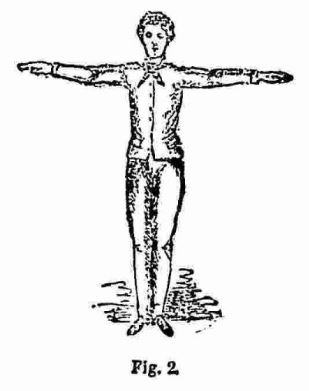

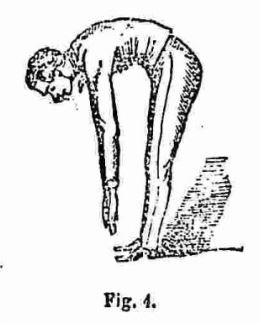
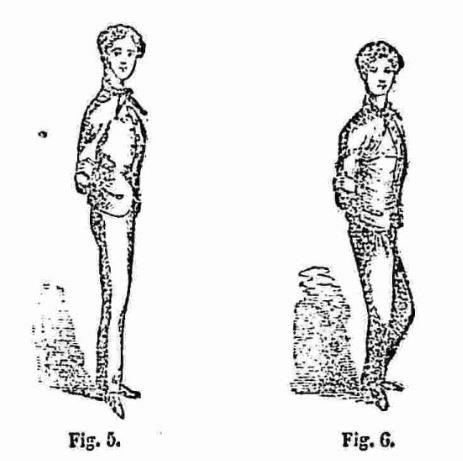
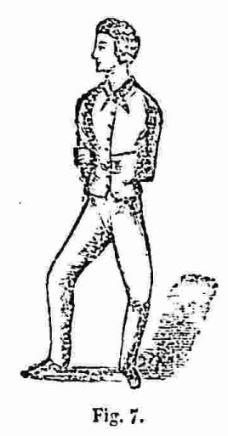
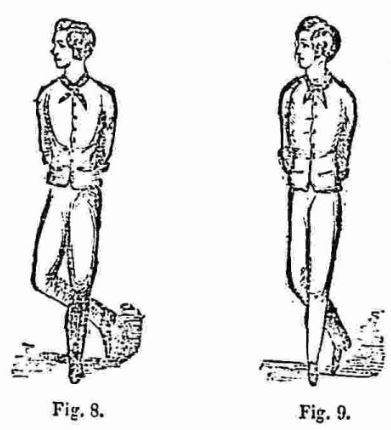

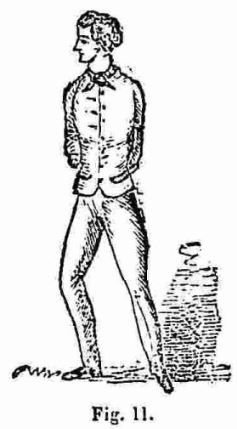
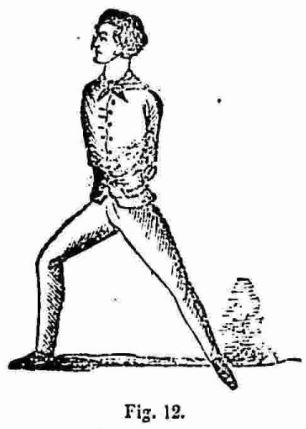
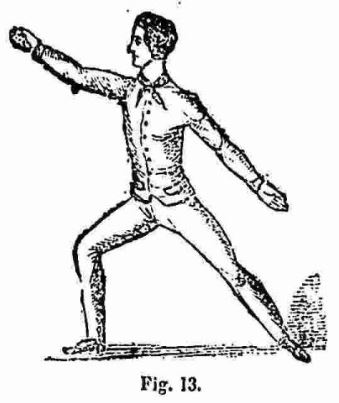
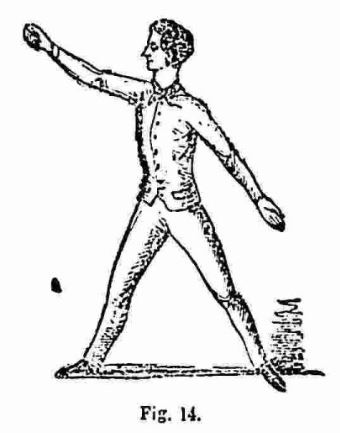

Trackbacks & Pingbacks